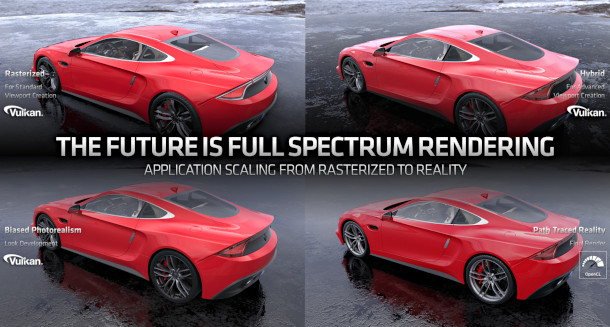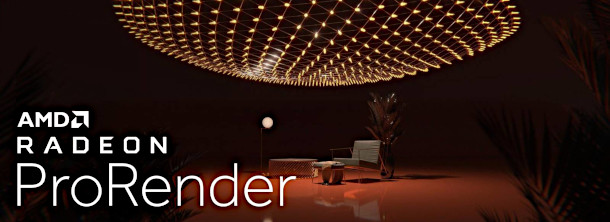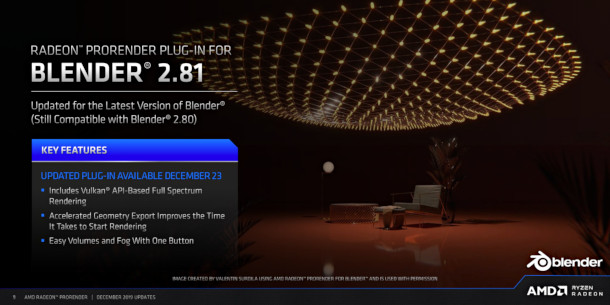Radeon ProRender for Blender gets ‘full spectrum rendering’

Originally posted on 26 September 2019. Scroll down for the Radeon ProRender 2.2 for Blender update.
AMD has released a beta preview of a feature it calls “full spectrum rendering” in Radeon ProRender for Blender, the Blender edition of its free, physically accurate GPU renderer.
The new viewport rendering mode is a Vulkan-based hybrid rasterisation/ray tracing system, enabling users to balance visual quality against performance.
New rendering mode balances the speed of rasterisation against the visual quality of ray tracing
Updated for Blender 2.80 earlier this year, Radeon ProRender for Blender uses path tracing for final-quality rendering, for which it uses the hardware-agnostic OpenCL API.
The new full spectrum rendering backend, based on the newer Vulkan API, is for viewport rendering only, and uses a user-controllable mixture of rasterisation and ray tracing.
The base render is rasterised, onto which Radeon ProRender can add ray traced effects including reflection, refraction and ambient occlusion, achieved using “compute shaders and smart denoising”.
By adjusting the renderer’s quality settings, users can change the balance between rasterisation and ray tracing, enabling them to trade interactive performance against the visual quality of the output.
AMD describes the new rendering mode as filling a “wide gap” between OpenGL viewports like Blender 2.80’s new Eevee renderer and full path tracers like Blender’s existing Cycles render engine.
According to the firm’s blog post, “users can get a more interactive experience like Eevee with more physically correct soft shadows, reflections and refractions”.

Updated 21 November 2019: AMD has released Radeon ProRender 2.1 for Blender, making the full spectrum rendering mode available on Linux as well as Windows.
The release also updates the renderer’s shaders to better match output from Blender’s Cycles render engine, including changes to handling of displacement and roughness.
Radeon ProRender can also now render meshes using Blender’s Principled Volume shader as volumes.
Artists rendering 3D objects for compositing into live footage get a new reflection catcher system, plus new render settings for transparent backgrounds in images.
In addition, the denoiser now works with viewport renders as well as final output; Blender’s LookDev viewport mode is supported; and materials can now be overriden via the view layer.

Updated 23 December 2019: AMD has released Radeon ProRender 2.2 for Blender.
The update improves geometry export, with “much faster render export time and startup for viewport rendering”, although AMD doesn’t put a figure on the speed boost.
Radeon ProRender also now supports Blender 2.81’s new vector math node, and an “approximation” of Blender’s Principled Hair BSDF material.
Full spectrum rendering is supported on AMD’s Polaris GPUs – which include its current Radeon Pro WX Series workstation cards – on Windows.
Availability and system requirements
Radeon ProRender 2.2 for Blender is compatible with Blender 2.80 and 2.81 on Windows 7+, Ubuntu 16.04.3 and 18.04.0 Linux and macOS 10.13.3+. It’s a free download.
Read more about full spectrum rendering in Radeon ProRender for Blender on AMD’s blog
Read a full list of new features in Radeon ProRender 2.2 for Blender in the online release notes
